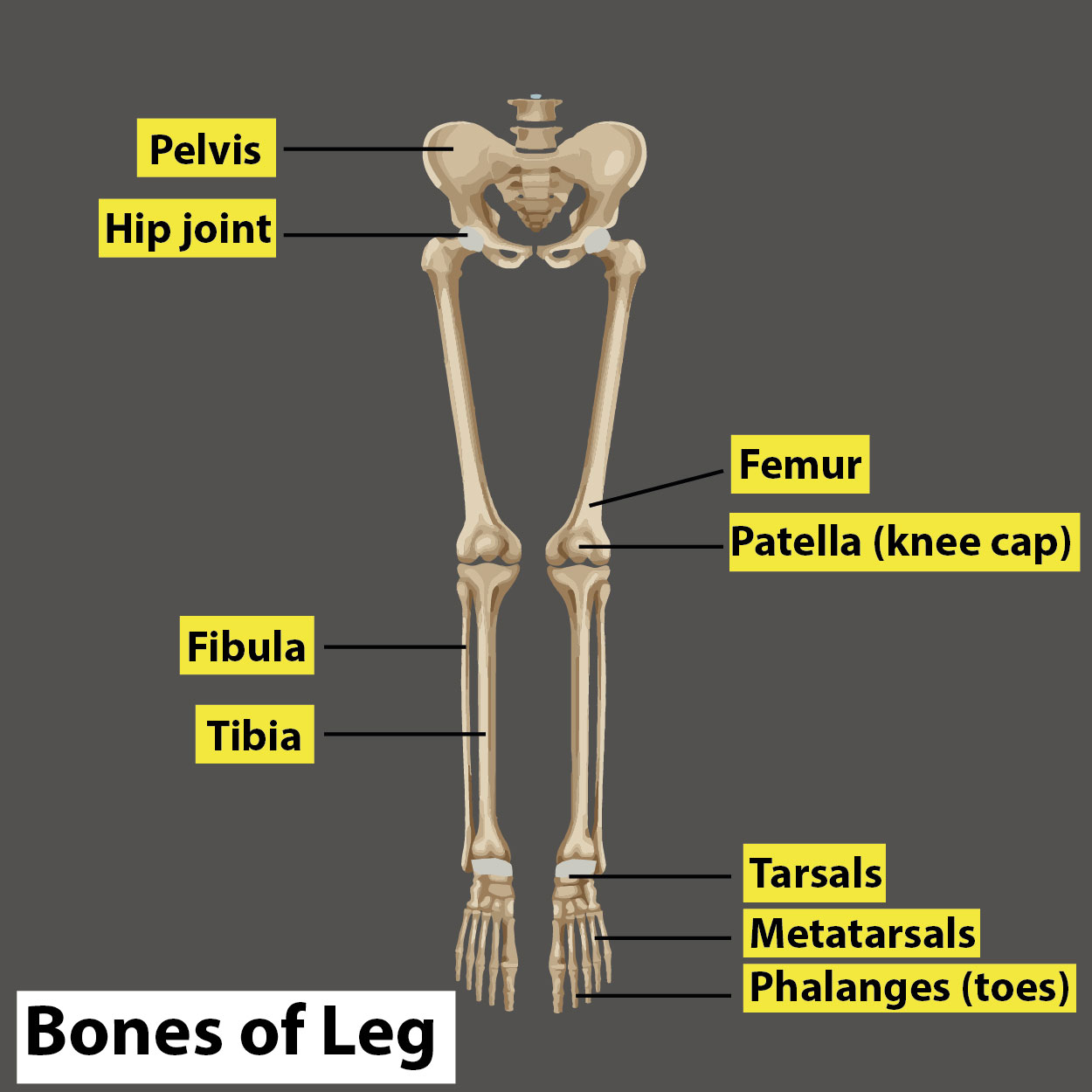
Answer
450.9k+ views
Hint: Bones protect the various organs of the body, produce red and white blood cells, store minerals, provide structure and support for the body, and enable mobility. This set of the given bones constitutes our hind limb and thus they directly participate in chasing the ball.
Complete Answer:
When a cricket player is running fast in pursuit of chasing a ball in the field, intuitively this motion requires the movement of the legs or the lower limbs in the human body.
- The lower limb contains 30 bones, namely the femur, patella, tibia, fibula, tarsal bones, metatarsal bones, and phalanges.
- The Femur is the longest and strongest bone of our body. It articulates with the acetabulum of the hip bone to form the hip joint.
- The tibia is the medial bone of the leg and is larger than the fibula, and it is the main weight-bearing bone of the lower leg.
- The tarsal bones each of the seven bones form the posterior portion of the foot.
- The metatarsal bones each of the five elongated bones from the midfoot.

So, the correct answer is” Tarsals, femur, metatarsals, tibia”.
Note:
1) The rest of the hind bones that constitute the hind limb are:
- The patella: is the kneecap. It articulates with the distal femur bone.
- The fibula is the thin bone present in the lateral leg.
- The phalanx bones of the foot: each of the 14 small bones in the toes.
- The tibia is also called the shin bone.
2) The lower limb of the human body is made up of three regions:
- Thigh: a portion of the lower limb located between the hip and the knee joint.
- Leg: specifically the region between the knee joint and the ankle joint.
- Foot: it is distal to the ankle.
Complete Answer:
When a cricket player is running fast in pursuit of chasing a ball in the field, intuitively this motion requires the movement of the legs or the lower limbs in the human body.
- The lower limb contains 30 bones, namely the femur, patella, tibia, fibula, tarsal bones, metatarsal bones, and phalanges.
- The Femur is the longest and strongest bone of our body. It articulates with the acetabulum of the hip bone to form the hip joint.
- The tibia is the medial bone of the leg and is larger than the fibula, and it is the main weight-bearing bone of the lower leg.
- The tarsal bones each of the seven bones form the posterior portion of the foot.
- The metatarsal bones each of the five elongated bones from the midfoot.

So, the correct answer is” Tarsals, femur, metatarsals, tibia”.
Note:
1) The rest of the hind bones that constitute the hind limb are:
- The patella: is the kneecap. It articulates with the distal femur bone.
- The fibula is the thin bone present in the lateral leg.
- The phalanx bones of the foot: each of the 14 small bones in the toes.
- The tibia is also called the shin bone.
2) The lower limb of the human body is made up of three regions:
- Thigh: a portion of the lower limb located between the hip and the knee joint.
- Leg: specifically the region between the knee joint and the ankle joint.
- Foot: it is distal to the ankle.
Recently Updated Pages
Who among the following was the religious guru of class 7 social science CBSE

what is the correct chronological order of the following class 10 social science CBSE

Which of the following was not the actual cause for class 10 social science CBSE

Which of the following statements is not correct A class 10 social science CBSE

Which of the following leaders was not present in the class 10 social science CBSE

Garampani Sanctuary is located at A Diphu Assam B Gangtok class 10 social science CBSE

Trending doubts
A rainbow has circular shape because A The earth is class 11 physics CBSE

Fill the blanks with the suitable prepositions 1 The class 9 english CBSE

Which are the Top 10 Largest Countries of the World?

How do you graph the function fx 4x class 9 maths CBSE

The Equation xxx + 2 is Satisfied when x is Equal to Class 10 Maths

What is BLO What is the full form of BLO class 8 social science CBSE

Change the following sentences into negative and interrogative class 10 english CBSE

Give 10 examples for herbs , shrubs , climbers , creepers

Difference between Prokaryotic cell and Eukaryotic class 11 biology CBSE




